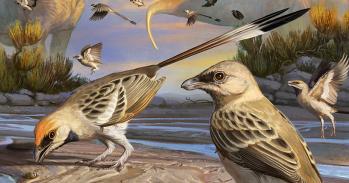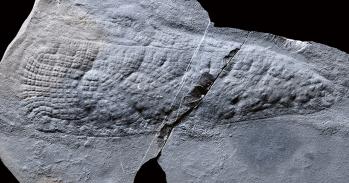
A new website that explains why humans have the same type of eye as an octopus and how animals separated by millions of years can evolve in the same way has been launched by a team of scientists at Cambridge University.
A new website that explains why humans have the same type of eye as an octopus and how animals separated by millions of years can evolve in the same way has been launched by a team of scientists at Cambridge University.
With Darwin we saw our world through new eyes, but perhaps with convergence we see new landscapes in evolutionary biology, reflecting a deeper order within living systems.
Professor Simon Conway Morris
The Map of Life (www.mapoflife.org) highlights hundreds of examples of ‘evolutionary convergence’ such as Australia’s thorny devil lizard (pictured) and North America’s desert horned lizard.
Despite being separated by 150 million years of evolution, both lizards have evolved the same way of collecting drinking water through their skin. The new website also explains why the fiery colours of autumn leaves that adorn hundreds of different tree species are examples of convergent evolution, as well as exploring the similarities between ants that farm and sea cows that graze.
The Map of Life project is coordinated by Professor of Evolutionary Palaeobiology Simon Conway Morris in the Department of Earth Sciences to provide an accessible website for the public, as well as for students and academics.
Dr Chloe Cyrus-Kent, a member of the team behind the Map of Life, will be at this month’s Cambridge Science Festival (www.cam.ac.uk/sciencefestival), the UK’s largest free science festival, providing a chance to explore who’s related to whom through convergent evolution, whether it be among gliding animals, desert plants or burrowing creatures.
She said: “Convergent evolution occurs when unrelated organisms acquire similar adaptations to life in similar environments but from very different starting points. In this way, creatures with common solutions to challenges in their unique habitats can occupy very distant branches of the tree of life. Perhaps one of the most startling example is the similarity between our eyes and those of the octopus.”
Professor Conway Morris, Dr Cyrus-Kent and Dr Verena Dietrich-Bischoff have spent several years assembling hundreds of examples of convergence and writing the topic-based content of the website, the first of its kind.
Sponsored by the John Templeton Foundation, the Map of Life shows that the living world not only evolves, changing over time as successive generations inherit modified information from their predecessors, but often do so along strikingly similar pathways despite being unrelated to each other.
“With Darwin we saw our world through new eyes,” said Conway Morris, “but perhaps with convergence we see new landscapes in evolutionary biology, reflecting a deeper order within living systems.”
This work is licensed under a Creative Commons Licence. If you use this content on your site please link back to this page.





